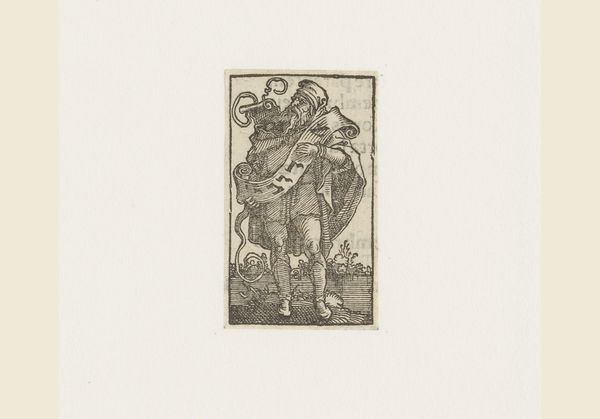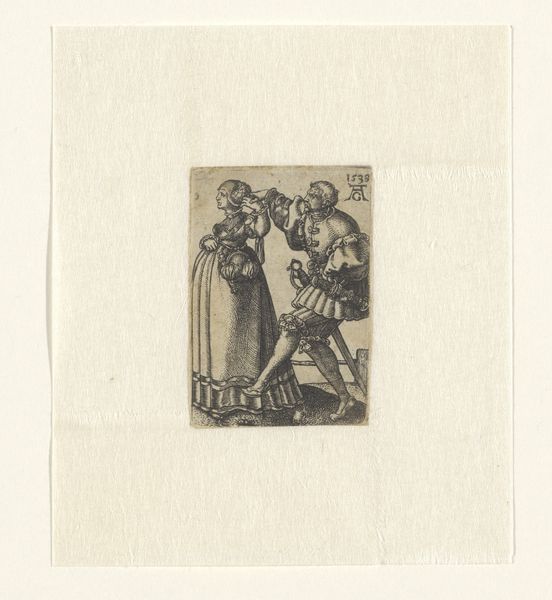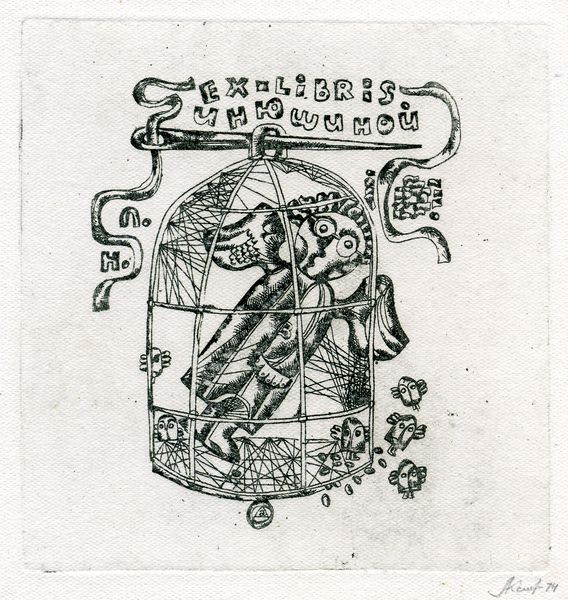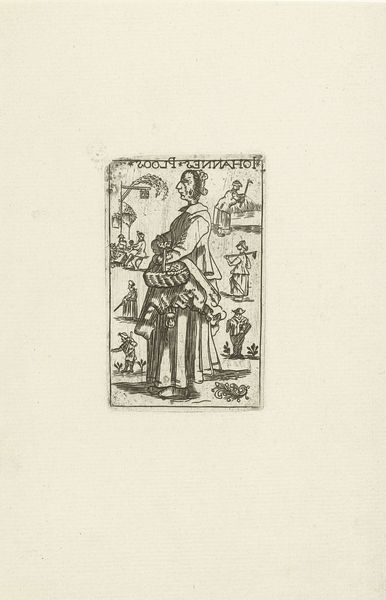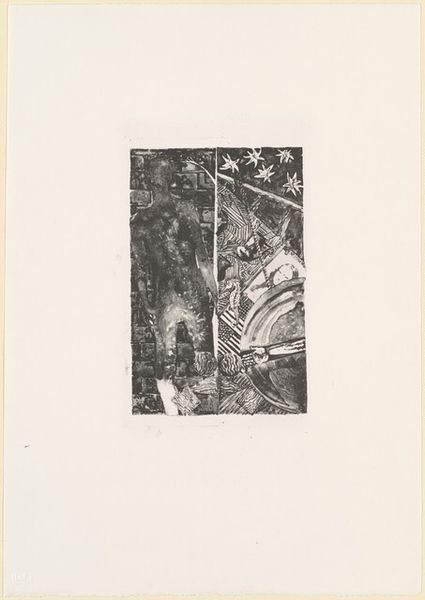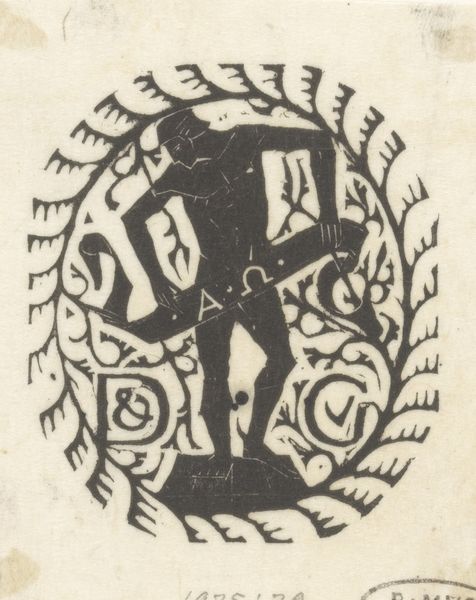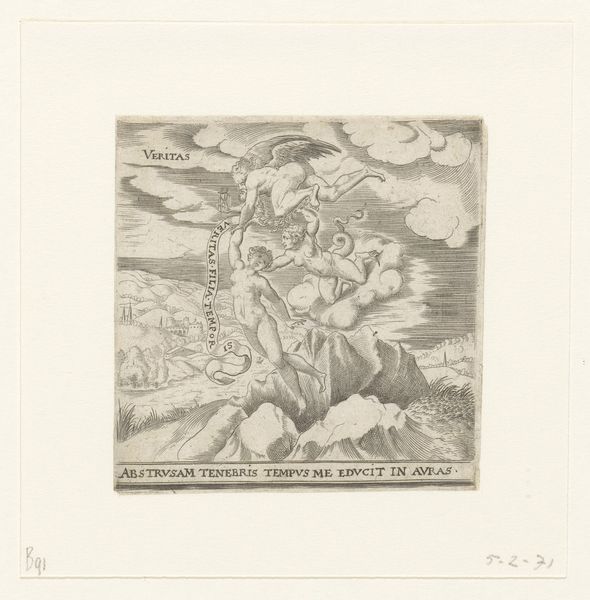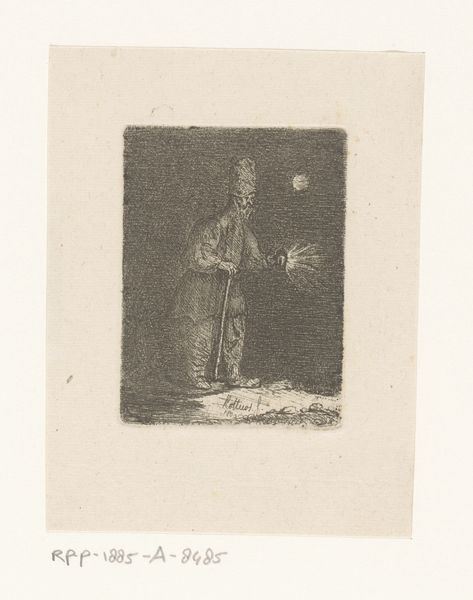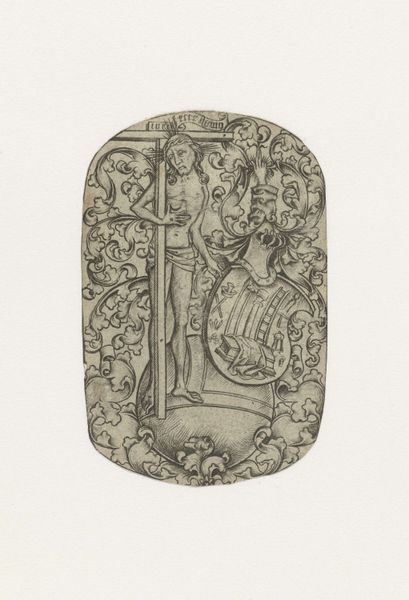
drawing, print, woodcut
#
portrait
#
drawing
# print
#
figuration
#
11_renaissance
#
linocut print
#
woodcut
#
northern-renaissance
Dimensions: height 50 mm, width 30 mm
Copyright: Rijks Museum: Open Domain
Curator: Here at the Rijksmuseum, we have an intriguing woodcut print from 1534, titled "Man met banderol met de naam Jehova," created by an anonymous artist. Editor: It’s strikingly stark. The composition, rendered entirely in linear black on white, evokes a palpable sense of solemnity and archaic austerity. Curator: Indeed. The artist uses the woodcut medium effectively to present a standing man, likely a prophet or scholar, holding a banderol emblazoned with Hebrew characters, spelling out the name of God, Jehovah. Editor: The imagery speaks volumes. That banderol is more than just script; it’s a bold declaration of faith during a time of immense religious upheaval. It evokes images of the Reformation and the struggle for individual religious expression. Curator: The Northern Renaissance style is evident in the meticulous detailing of the figure’s garments and the surrounding foliage, grounding the symbolic representation in a palpable reality. Note how the lines create texture and volume, all while adhering to a tight, almost miniaturist sensibility. Editor: Look at the way he's posed: almost as a signpost for his own belief, for an idea. The turbulence of the period comes across to me--the figure appears defiant and almost wary, as though protecting his message against persecution. It's a powerful statement given its simplicity. Curator: The careful rendering of Hebrew script itself speaks to a learned audience or at least an audience with connections to scholars or religious groups that value knowledge and truth seeking. The choice to depict a tangible figure interacting directly with sacred text is very interesting. Editor: Right, it merges the divine with the earthly. It suggests a personal relationship with the scripture, deviating perhaps from solely institutional interpretation. It urges a direct encounter with the divine, a deeply humanist Renaissance concept. Curator: It leaves you contemplating the nature of faith during this tumultuous era and wondering about the courage required to express one's convictions so visibly. Editor: Absolutely. It is both a relic and a testament to enduring spiritual yearning, expressed through simple yet highly emotive graphic language.
Comments
No comments
Be the first to comment and join the conversation on the ultimate creative platform.
